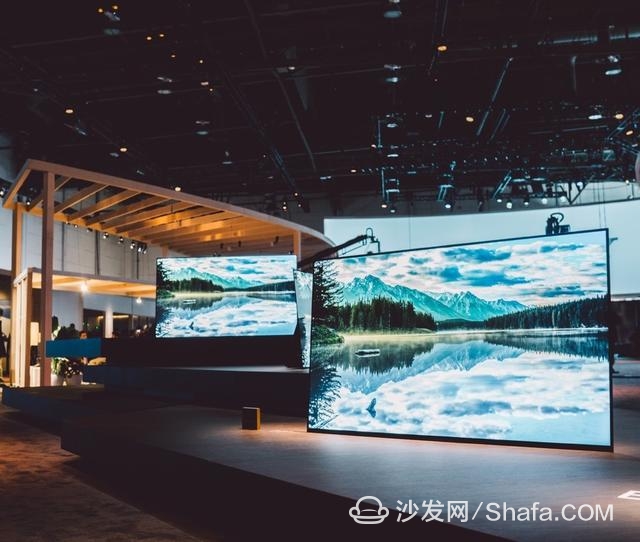
Although the surface looks three feet apart, but if the analysis of these three technical solutions, I am afraid that the first out of Samsung QLED is: Frankly, if the technology is still on the LCD era, if there is competition, there are still some Selling point, but if you want to use the technology of the LCD era to confront OLEDs with the so-called "next-generation display technology", there is almost no possibility of victory, because in essence, it is still an LCD TV. The patching of light in the original technology is far from enough. This is also an important reason why QLEDs have been criticized for being outdated. Of course, for Samsung's own marketing purposes, Samsung is still packaging QLEDs into the same technology of the future generations of OLED screens, avoiding the fall of public opinion.
Since QLEDs did not even get tickets for future market competition, then the remaining players will only remain LG solid promoters LG and "technology pioneer" Sony. As we all know, OLED panels are often labeled as “Future Technology Sense†because of their revolutionary inherent advantages such as self-luminous, thin body, and no trailing. Although there were some problems such as low product yield, short service life, and high cost in the early stage of technology development, they have been fundamentally solved under continuous technical improvement and have the ability to be equipped with mature products. However, the reality is that LG and Skyworth, Changhong and other domestic brands are trying to sell OLED TVs, but the final market sales have not seen improvement, quite a bit "injured Zhongyong" means.
In fact, the root cause of LG and other branded markets, Waterloo, is to focus too much on the panel's own upgrades and technological maturity, but on the contrary ignore the real needs of the consumer market. After all, from the perspective of the public, it truly represents the future. It is not a certain kind of display technology, but it can provide consumers with an unprecedented audio-visual experience.

Next, let's discuss a more profound question: Since the above mentioned that Sony has far exceeded LG's expansion capabilities in the application of OLED, what did Sony do during this decade? Perhaps it would be more appropriate for this question to be answered, that is, not only in the past decade, but since the creation of Sony TV products, the brand has been doing one thing perseverantly, that is, it is constantly focusing on the uniqueness of Sony itself. The image quality optimization technique is iterated to enable it to act on Trinitron in the era of tube management, Bravia in the LCD era, and Advanced Optical Control PRO, up to now on various screen technology solutions such as OLED, in other words, by the Sony Corporation. What is done is not simply to use a certain type of picture tube or panel instead of own TV, but to combine its own picture quality optimization technology with the display panel, so as to exert the maximum strength of both parties and eventually achieve a more ultimate audio and video experience. If you have to use time to make a division, then we can say that in the past decade, Sony's secretive force is to make the display technology and Sony software algorithms combined to achieve the best results.

The reason why "Sony is conducting an "all-round" in-depth research on OLED panels" is another important support point, Sony's exclusive screen sound field technology. The innovation of this technology is to take advantage of the ultra-thin characteristics of OLED screens and creatively think of the screen as the resonant film of the speaker, but do not think that this technology is just for the purpose of making the TV body thin but designed. The revolution lies in creating stereoscopic and dynamic sound effects on TV products for the first time. The contradiction of the continuous image but sound stillness will no longer appear on the A1. Remember that there was a scene in A1 that was quite impressive: a train left the screen Driving sideways to the right side, the rumble of the front quickly slides on the screen with the movement of the train, truly accomplishing the "unity of sound and picture" that was difficult for any television in the past.

Smart TV/box information can focus on smart TV information network sofa butler (http://), China's influential TV box and smart TV website, providing information, communication, TV boxes, smart TVs, smart TV software, etc. Answering questions.
Type1 Tethered Cable,16A Type1 Tethered Cable,32A Type1 Tethered Cable,Type 1 Tethered Charging Cable
Yangzhou JERI New Energy Co., Ltd. , https://www.jrevcharging.com